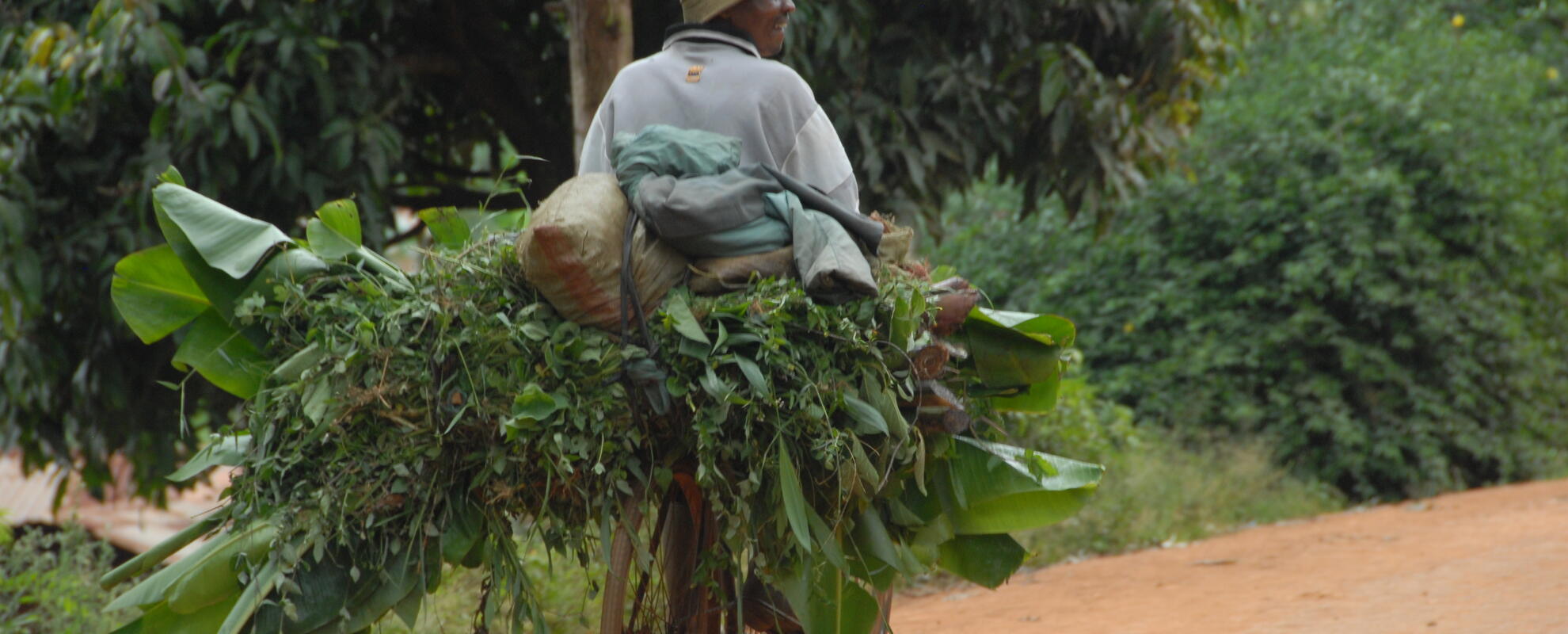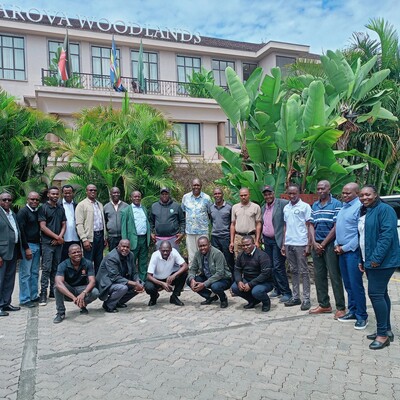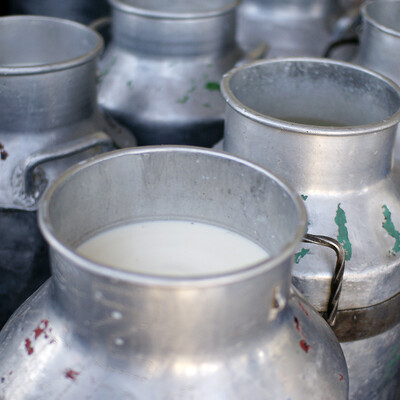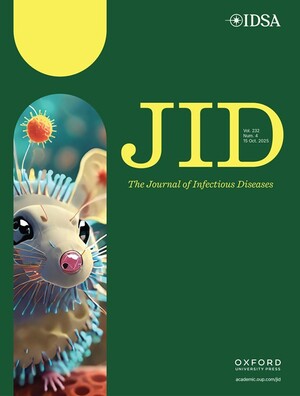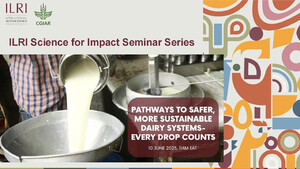
Assessing sustainability of smallholder dairy and traditional cattle milk production systems in Tanzania
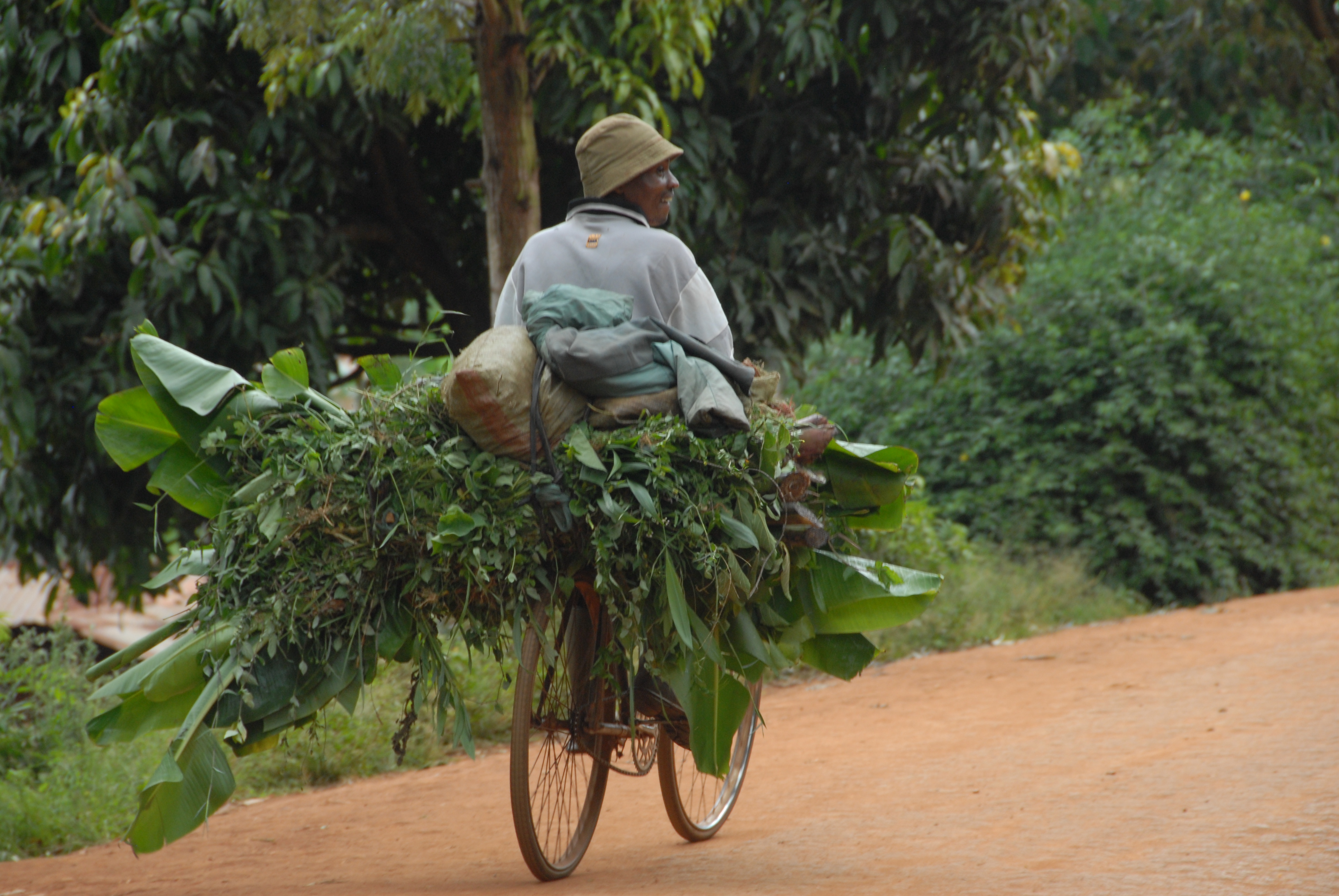 A dairy farmer carries fodder on a bike, Ubiri village, Lushoto, Tanga, Tanzania (photo credit: ILRI/Niels Tuefel).
A dairy farmer carries fodder on a bike, Ubiri village, Lushoto, Tanga, Tanzania (photo credit: ILRI/Niels Tuefel).
Both in the scientific community and the
media, there are a lot of talks about sustainable livestock systems, what they
are and how to promote them. A sustainable farming
system is one
which is economically viable, socially acceptable, environmentally friendly and
transferable to the future generations. But achieving sustainable smallholder milk production systems in
developing countries, including Tanzania, is limited by many constraints including
low cow productivity, shortage of
feed, limited access to inputs and outputs markets and degradation of natural
resources.
Smallholder dairy production systems are dairy farms which have up to five dairy cows, where majority are
crossbreeds of local and pure exotic breeds and milk is considered the main
source of income.
On the other hand, a traditional cattle milk
production system consists of cattle farms keeping mainly indigenous cattle and
milk is not considered the main source of income.
A recent
study concluded in 2018 by the Maziwa Zaidi project
assessed the
sustainability of smallholder dairy
and traditional cattle milk production systems in Tanzania in four districts in Morogoro and Tanga regions. The
study first measured sustainability at farm level. Candidate indicators for assessing farm sustainability were identifiedby 44 diverse experts and stakeholders using a two-round Delphi approach. The identified key economic indicators
were milk hygiene, cow productivity, income per litre of milk and access to
milk market. Social indicators included participation in organizations, women’s
empowerment and the education level of the farm manager; while environmental indicators
were water conservation and access to water. Based on the 15 most relevant indicators,
a milk
production farm sustainability assessment tool was
developed, and data collected on 431 randomly selected farms in the study
districts.
The second
step was to measure the sustainability at producers organizations (PO) level,
using the existing ‘Producers’ Organisation
Sustainability Assessment tool (POSA)’.
The sustainability performances at farm level were
computed for PO-member and non-PO-member
farmers. Then the relationships between the
farm and POs sustainability performances
were established. Moreover, the factors influencing farm sustainability were
analysed.
The study showed that local experts and stakeholders considered some currently used
indicators of sustainability
like greenhouse gas emissions less relevant in the Tanzanian context. The exclusion of the currently used indicators,
particularly the environmental indicators
could be justified by the subsistence nature of milk production systems in the
study area, where the milk is produced in low quantity and has limited access to
market. The
most relevant economic indicators were milk hygiene and cow productivity;
social indicators were participation in organizations and women’s empowerment;
environmental indicators were access to water and water conservation. These findings show the importance of matching any set of
indicators to the characteristics of the specific production system being
examined.
Further study
results showed that the overall farm sustainability
performances and the
economic, social and environmental dimensions were all very low. It was also established that members of producers’ organizations
had higher farm sustainability performances,
especially the economic and social dimensions. Producers’ organization
sustainability performances, particularly its provision of dairy inputs, have a strong positive
relationship with farm sustainability performances, particularly the farm
economic dimension. Moreover,
provision of dairy production inputs and services has
strong positive relationships with the farm economic sustainability and related
‘cow
productivity, forage self-sufficiency and feed conservation’ indicators.
Results also showed that the key
factors affecting milk
production farm sustainability were the use of stall-feeding system,
acquiring credit, distance to trading centre and farm size.
The study
recommends the following:
Promoting use of the milk production sustainability assessment
tool to guide farm level decision making towards
sustainability of their milk production farms. However,
the tool may be improved based on the objectives and dynamics of sustainability
in order to stay relevant to
the context being studied.
Using
sustainable milk producers’ organizations
as a strategy to improve the economic and social farm
sustainability especially in case of dairy inputs and services (e.g. training, artificial
insemination, credit and feed) provision which are difficult to access at
individual level.
The stall feeding
system should be encouraged, where applicable, by supporting farmers to gain access to graded cows,
inputs, reliable
markets,
service provision and training
on dairy cow management,
in order to further improve
farm sustainability.
Distinct
programs targeting women and young farmers should
be put in place in order to make dairy farming
attractive to young people
and more workable among female-headed households.
Even so, producer organizations should be strengthened
particularly in inputs and service provision, linkages with inputs
suppliers and reliable milk markets, as well as effective leadership and management.
The dairy sector remains one of the key sectors in
Tanzania. To further aid progress towards improved sustainability
of its
milk production, a detailed assessment that would provide more insight on the
sustainability of milk production in smallholder dairy and traditional cattle
production systems is recommended. If conducted at higher levels, especially at village
and country levels, it would properly
cover features which are not covered at farm level, like overgrazing and
allocation of land for livestock in traditional cattle keeping systems and support decision-making among stakeholders.
Access the full thesis paper here as written by
Célestin Munyaneza, assistant lecturer at the Faculty of Agriculture, Environmental
Management & Renewable Energy, University of Technology & Arts of Byumba,
Rwanda.
The three year study was concluded with funding from
the German Academic Exchange Service (DAAD) and ILRI as part of the Maziwa Zaidi project and was supervised by ILRI’s Isabelle
Baltenweck.





